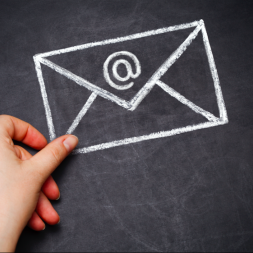6 Key Features of a Professional Email
I often receive emails from other nurse practitioners, or am forwarded communication from NPs, that is, well, less than professional. Whether the tone of the email leaves something to be desired, or the content is of a matter best discussed in person, there are some professional norms to follow with work-related communication. Not to mention, grammar and writing standards apply. So, what do you need to keep in mind as you correspond as a nurse practitioner working in a professional setting?
Whether you’re communicating with a potential employer about a NP position, sending a thank you letter, or asking for a recommendation, being as polished and professional as possible in your message can make all the difference. Here are six key features to ensure your emails are professional each and every time you hit send.
Include a Direct Subject Line
Many nurse practitioners underestimate the importance of a professional subject line, which serves as a preview for the rest of the email. Subject lines should be concise yet descriptive enough to catch the recipient’s attention so that he or she can easily identify the purpose of your email as well as determine its level of importance. Often, I use the subject line “Following Up”. This prompts an open from the recipient and signals I’m checking in on something we previously discussed.
Properly Greet Your Recipient
The tone of your email is set immediately by a greeting. Being too informal can make your objective feel unprofessional; while neglecting to greet the person altogether can run the risk of coming off bossy or abrasive. If you know the person’s name, address him or her personally. If not, including a simple “Hello” is far better than not greeting your recipient at all.
Keep the Body Concise and Organized
It’s common to haphazardly throw thoughts into the body of an email and hit send. But when an email is disorganized logically and the information isn’t concise and to the point, it is much more susceptible to being misinterpreted or even overlooked altogether by the recipient. Although it is acceptable to be friendly and familiar with your reader, try not to ramble too much. Focus on only including the most relevant information in as few words as possible, and as soon as possible into the body. This will help keep the reader attentive to the purpose of your email.
Additionally, organize the body of the email so that it is visually scannable. Bullet points and numbers are an extremely effective way to do so and present a list of information in a way that is easily digestible for the reader. After you’ve drafted your email, cut the fluff by going through and eliminating any sentences or individual words that aren’t necessary.
The Closing
Such as with the greeting, signatures give the recipient an impression of your professionalism as well as conclude the tone and objective of your email. End your email by making it clear what you would like your reader to do, but not in a way that is demanding. Use phrases such as “I look forward to hearing from you” or “please let me know what your thoughts are”, and always sign off courteously with a “Thank you” or “Sincerely”. Be sure to you include your name, title, company name and additional contact information at the end of each signature. This is especially important when you’re emailing someone who doesn’t know you.
Proofread and Edit
Make it a habit to proofread and edit every email before you hit send. Mistakes, typos and grammatical errors can make you appear unprofessional or incompetent. While certain lingo and abbreviations are common in text messaging, avoid using them in your emails as doing so makes it seem as though you lack proper communication skills.
You Might Also Like: 5 Really Dumb Things for NPs to Put in an Email

